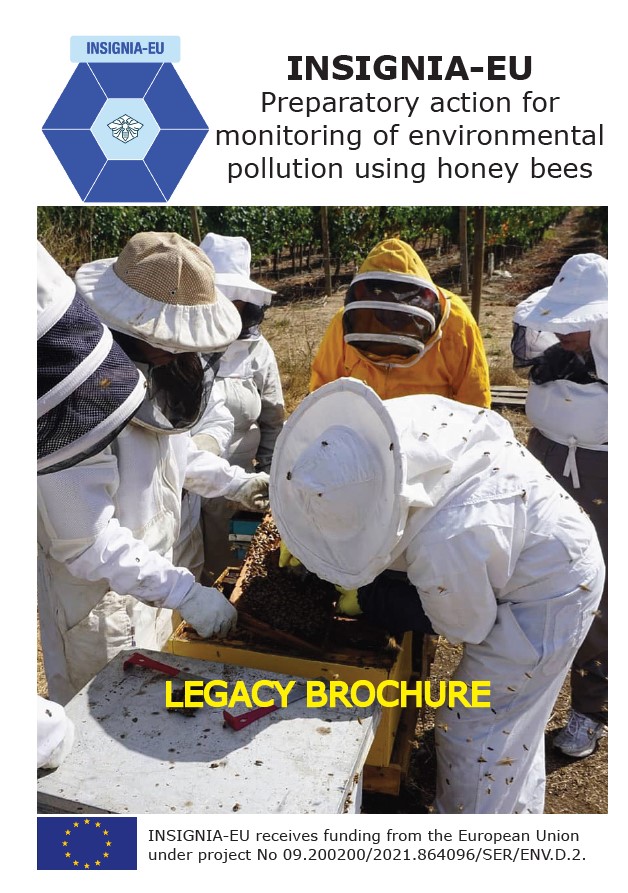
Picture impression from a happy day
We made it
INSIGNIA did present our results at our final conference at the European parliament in Brussel.
It was a very exciting and giving day. We did invite all our stakeholders online to our meeting. Many did join online.
Have a look on our presentations
The High-level segment presentation – or read the 2 hours presentation
And the conference presentation, where we went into the deeper analysis of the project.
https://webcast.ec.europa.eu/insignia-meeting
It was also our end meeting, where the main part of our national coordinators did join.
The project is over, but now is a new important part starting. Publication, dissemination and hopefully an INSIGNIA 3 on its way. We hope so.
We want deeply to thanks our 350 citizens scientist all over europe taking part our project. Without them we would not have a project.
We want to thank our sponsor, the EU Union, for supporting this very innovative project.
Legacy Brochure
Have a look on our Legacy Brochure. A nice easy to understand overview. Download here.
Final Conference
INSIGNIA Preparatory Action for monitoring of environmental pollution using honey bees
- HIGH-LEVEL SEGMENT (EUROPEAN PARLIAMENT) 5 December 2024 10:00-12:00. Online attendance only. Link: https://europeanparliament.webex.com/europeanparliament/j.php?MTID=m823087403d18c1eaf9862abb479435de
- CONFERENCE (EUROPEAN COMMISSION) 5 December 2024 13:30-18:00
Charlemagne building, Room Lord Jenkins Rue de la Loi 170, 1040 Bruxelles, Belgium. Webstreaming: INSIGNIA MEETING – Streaming Service of the European Commission – Please note the link at the beginning was wrong – now updated.
Right link here: https://webcast.ec.europa.eu/insignia-meeting
A new popular article…
As the INSIGNIA-EU project draws to a close, the results of the vast numbers of samples collected in 2023 are being collated, analysed and modelled. A popular article has been written and published in the English language Beekeepers Quarterly magazine: https://www.northernbeebooks.co.uk/products/the-beekeepers-quarterly/ https://beekeepers.peacockmagazines.com/ It is now being translated into many languages and will be published in various beekeeping magazines around Europe. The article describes the meeting of the INSIGNIA-EU Consortium in Bregança, Portugal in March, and the presentation of the results to the European Commission in Brussels, Belgium in April. Some key results are also presented.

Presenting latest results of INSIGNIA 2024 – Madrid
Sjef van der Steen’s latest presentation at the BeeHealth symposium in Madrid 2024 June. Recording is a bit dark, sound is good – after 1 min!!
New Video podcast on INSIGNIA
Update on INSIGNIA-EU. We met in Madrid for a BeeHealth symposium where INSIGNIA-EU results were presented. We have been absent for a while, so listen to the Video podcast, where we also talk to our National Coordinators. Stay tuned…
INSIGNIA-EU Poster at the ECSA conference in Vienna, Austria
The INSIGNIA-EU poster presented at the European Citizen Science Conference in Vienna, Austria (also for download)
The poster for download: GratzerBrodschneiderINSIGNIAEU_PosterECSK2024
Kristina Gratzer
April in Vienna: European Citizen Science Conference
“Let’s celebrate Citizen Science together at the 5th conference of the European Citizen Science Association (ECSA) and the 9th Austrian Citizen Science Conference.” – Yes we did!
ECSA, together with the Natural History Museum Vienna, Boku University and Österreich forscht, organised this event from April 3rd to 6th 2024 in Vienna, Austria. Among the 500 participants, Robert Brodschneider and Kristina Gratzer from the University of Graz were included.
The conference was packed with interesting presentations and workshops on a wide range of citizen science projects and relevant topics. On the first conference day, Kristina Gratzer represented the INSIGNIA-EU consortium with a poster. The special thing about the poster session was that each presenter was provided with a bottle of wine and offered a glass to anyone interested while talking about the poster. We would love to see this approach at other conferences as well. On Friday, the 5th, Robert Brodschneider held a talk about Beekeeper participation in environmental monitoring in Europe in front of ca 50 people, followed by an intense talk about beekeeper citizen scientists.
INSIGNIA-EU Poster with bee hives in the background
Continue reading “April in Vienna: European Citizen Science Conference”






